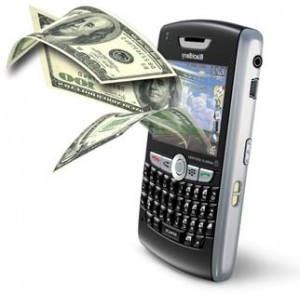 Living and working in a cash-free market is becoming an increasingly likely reality for many people all across the globe. Credit card purchasing is pushing cash aside in the US and Europe, as well as online banking and bill payments for basic transactions, goods, and services. But how does this trickle down to places like Latin America, where cash is king, yet economies are still growing at a rapid pace? In traditionally cash-based economies, there are millions of people who don’t keep their money in a bank. Whether it’s due to past financial crises, or lack of enough funds to maintain the required minimum balance, millions of people have been left behind in the e-commerce revolution. This is mostly due to the simple reason that they don’t have a bank account.
Living and working in a cash-free market is becoming an increasingly likely reality for many people all across the globe. Credit card purchasing is pushing cash aside in the US and Europe, as well as online banking and bill payments for basic transactions, goods, and services. But how does this trickle down to places like Latin America, where cash is king, yet economies are still growing at a rapid pace? In traditionally cash-based economies, there are millions of people who don’t keep their money in a bank. Whether it’s due to past financial crises, or lack of enough funds to maintain the required minimum balance, millions of people have been left behind in the e-commerce revolution. This is mostly due to the simple reason that they don’t have a bank account.
Believe it or not, over 60% of people living in Latin America are classified as “Unbanked”, meaning that they have no bank account, and have to rely entirely on cash. Historically, this has excluded them from a large sector of their own growing markets. That’s all about to change, as new technology is bringing us the ability to make even the smallest purchases and transactions via a few clicks from our cellphones. This technology is known as “Mobile Money”, and it’s primed to take over the e-commerce market in Latin America.
How Does Mobile Money Work?
Mobile Money works by transforming your cellphone into what’s called an “e-wallet”, or a virtual account that even the smallest purchases can be made by. Rather than carrying cash, the user simply has to charge money to a mobile account, which can then be exchanged with other mobile users connected to the same service. Users, in this case, could be anyone from a family member, to a supermarket, to your cable provider. The possibilities are limitless, as long as the user or business is subscribed to the service.
This will have huge potential in Latin America, as smartphone usage is set to rise drastically in the next two years, making Mobile Money a viable option for a majority of the region’s population. Most of this potential market success is based on a mobile technology known as NFC, or “Near Field Communication”. NFC allows smartphone users to exchange data, or in this case funds, from one user to the next by being in close vicinity, or physically tapping the phones together.
Spain’s Telefonica, Visa, CaixaBank, and Gemalto are currently on the front lines of the latest release in NFC technology, which will, by our bet, be the impetus for a major wave of Mobile Money into the LatAm market within the next year or so. One of the best things about Mobile Money is you don’t need a bank account to access it. This gives it massive market opportunities in all parts of the developing world, where businesses will now have another viable payment option, safer than cash, and nearly as readily available. With smartphone use outgrowing bank usage at a rapid pace, it’s the next logical step in further capitalizing on the growing purchasing power in the region.
Why Latin America? Why Now?
If its success in Africa and Asia has taught us anything, it’s that Mobile Money is ideal for developing countries’ economies. As we mentioned before, in Latin America, economic growth is outpacing the rate at which people are putting their money in banks. In a lot of cases, people just don’t see the need to open a bank account. However, with a booming cellular market, and a strong base of experienced mobile users, introducing Mobile Money should be much easier than it would be in the US or Europe. With a deep mobile culture already set in place, convincing people to switch from cash to e-purchases shouldn’t be too much of a stretch. At the very least, it presents much less of a challenge than converting them to a banking culture.
We believe that introducing Mobile Money into the Latin American market will have remarkable success. And the timing seems to be perfect, as access to this new technology is on the cusp of breaking wide open. Changing the cultural usage of cash, and de-stigmatizing financial institutions may not happen overnight, but it will happen, and the region is primed and ready. From a coffee in Colombia from your cellphone, to banking in Buenos Aires from your Blackberry, don’t be surprised to see Mobile Money in action in the next 12-18 months. Mobile Money is about to make its move, and the timing for this region is right, right now.
